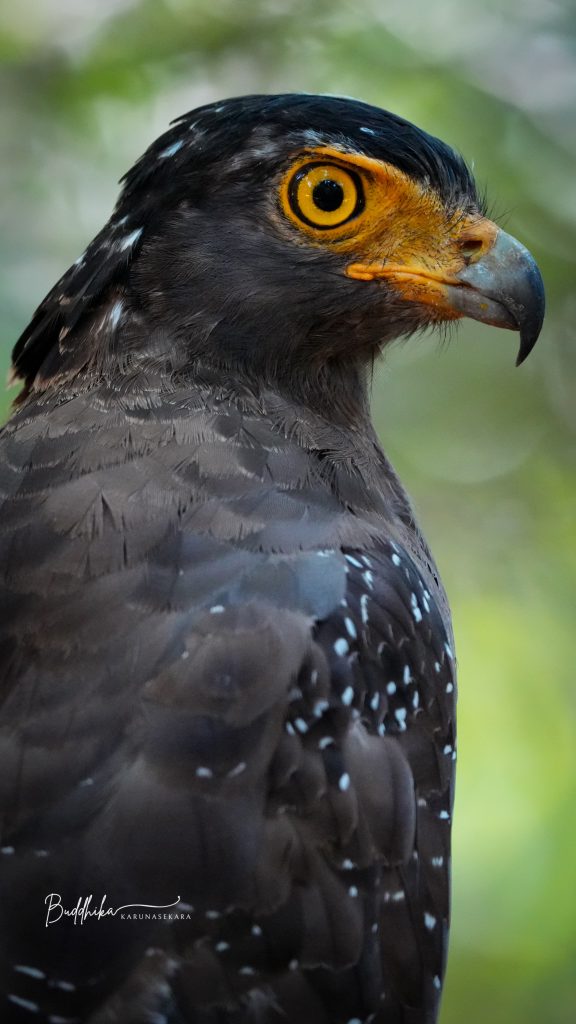
With a broad-winged silhouette and a piercing, high-pitched call that echoes across forests, the crested serpent eagle is both striking and elusive. Its dark plumage, crowned with a distinctive shaggy crest, and its fierce yellow eyes mark it as a bird of power. Circling above rivers and woodlands, it is most often seen scanning the ground for its namesake prey, snakes. This intimate link with serpents has shaped how people have imagined it, weaving the eagle into tales of guardianship, danger, and transformation.
In South and Southeast Asian folklore, the serpent eagle is often tied to themes of protection and vigilance. Its habit of soaring above villages was sometimes seen as a watchful presence, keeping balance in the natural order. In parts of India, the bird’s cry was considered a warning, a herald of approaching rain or a reminder of hidden dangers in the undergrowth. Farmers working in the fields looked up when they heard its piercing whistle, taking it as a sign to stay alert.
Among the Dayak people of Borneo, birds of prey, including serpent eagles, are believed to carry messages from the spirit world. Their flight patterns are studied as omens, especially during important undertakings such as planting, hunting, or journeys. A serpent eagle flying high and steady could be taken as a favourable sign, while erratic movements might signal misfortune. The bird’s connection to snakes, creatures that are both feared and revered, only deepened its role as a messenger between realms.
In Hindu mythology, eagles are associated with Garuda, the divine mount of Vishnu and eternal enemy of serpents. While the crested serpent eagle itself is not Garuda, its constant battle with snakes reflects the same mythic struggle between light and darkness, order and chaos. To see it swoop down upon a serpent was, for some, to glimpse this eternal contest played out in the living world.
In Chinese traditions, eagles symbolise strength and far-sightedness. A serpent in the talons of an eagle becomes a powerful image of victory over danger, wisdom triumphing over deceit. It is a motif found in art and storytelling across Asia, echoing the daily reality of the crested serpent eagle as it masters one of nature’s most feared creatures.
Even in local superstition, the serpent eagle finds a place. In parts of rural Sri Lanka, its feathers were once thought to hold protective power, especially against snakebite. To possess a feather was to carry a fragment of the bird’s courage. Yet, as with many raptors, harming the eagle was also seen as inviting bad luck, for it was regarded as a guardian of the balance between predator and prey.
Despite its fierce appearance, the crested serpent eagle is not a noisy bird of conquest. Its eerie whistle drifts through the forest canopy, more haunting than triumphant, reminding those who hear it of the unseen lives moving below the leaves. To watch it soar, wings outstretched and tail fanned wide, is to witness a drama older than myth, a sentinel of the skies, forever circling the boundary between earth and heaven.
